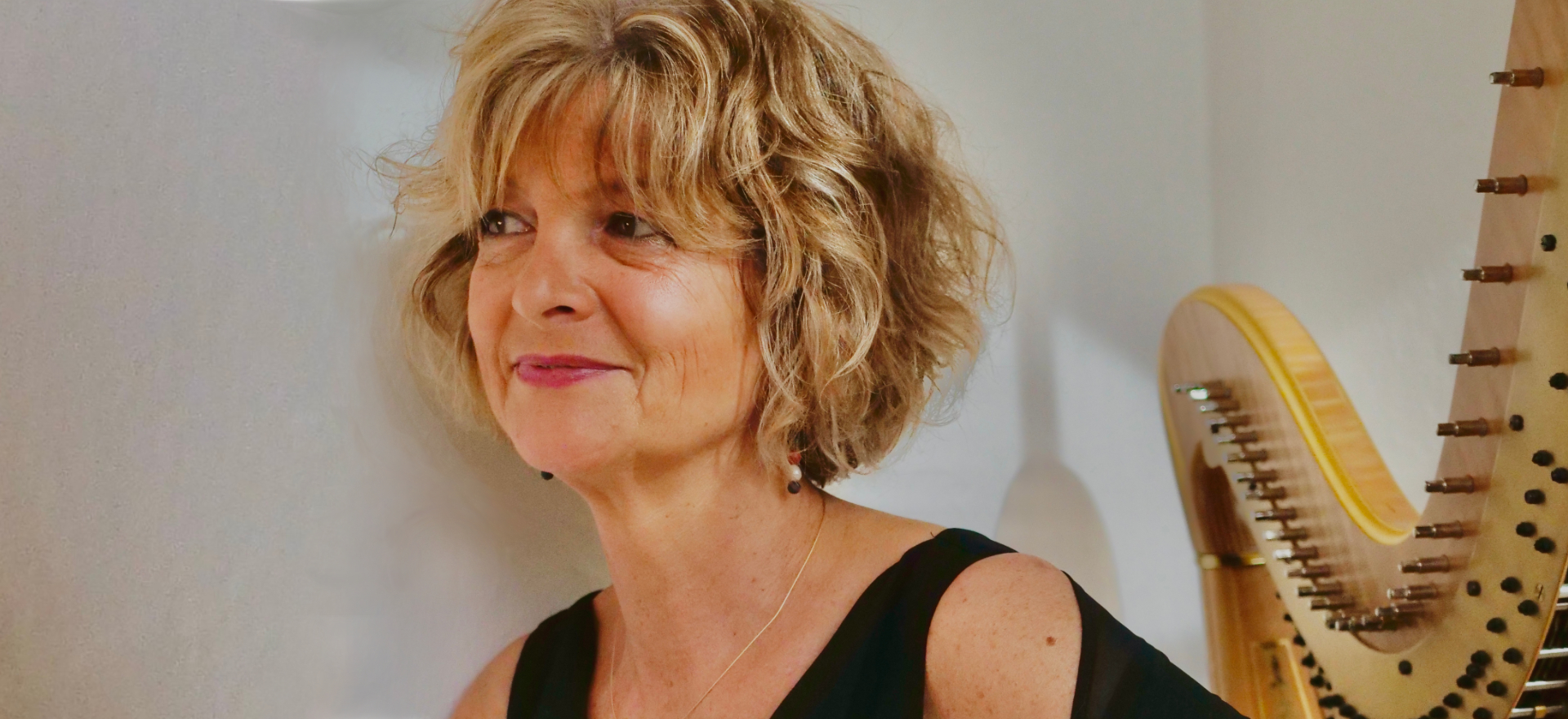
The secret of legato playing
Any conversation with Margit-Anna Süß about her profession inevitably encounters the word “Zwischendämpfung” sooner or later. It is understandable that the lay person, however well-informed in musical matters, will not be able to visualise anything under this technical term, because it has not properly reached even the specialists and has therefore not found its application. Most representatives of this inner circle are chiefly concerned, when practising their art, to extend the relatively small range of works intended for the harp by exploring other repertoires, particularly by interpreting or arranging instrumental music.
In selecting “extraneous” works, Margit-Anna Süß has always exercised extreme care: “I had long since more or less banned baroque music from my repertoire, because I was unhappy with the harp’s continuing resonance, and above all by the way in which individual notes, especially in the left hand, merge into each other. First I tried out a harp developed by Nicanor Zabaleta with the firm Horngacher which had an additional damping pedal. This resulted in a drier tone because the whole bass register was damped. Furthermore it didn’t change anything in the articulation or phrasing, because the notes merged almost as much as before. Only with the discovery of the “Zwischendämpfung” technique did I attain something definitely closer to my idea of how to interpret baroque music. This of course also worked well for playing continuo bass.”
In selecting “extraneous” works, Margit-Anna Süß has always exercised extreme care: “I had long since more or less banned baroque music from my repertoire, because I was unhappy with the harp’s continuing resonance, and above all by the way in which individual notes, especially in the left hand, merge into each other. First I tried out a harp developed by Nicanor Zabaleta with the firm Horngacher which had an additional damping pedal. This resulted in a drier tone because the whole bass register was damped. Furthermore it didn’t change anything in the articulation or phrasing, because the notes merged almost as much as before. Only with the discovery of the “Zwischendämpfung” technique did I attain something definitely closer to my idea of how to interpret baroque music. This of course also worked well for playing continuo bass.”
The musical results of this technique are plainly evident to the listener – just take the Campanella Musica albums of works by Carl Philipp Emanuel and Johann Sebastian Bach or the ground-breaking recording of the eight Schubert Impromptus op. 90 and op. post. 142. Another aspect of this is clearly seen in the complex technical devices by means of which Margit-Anna Süß and a handful of colleagues such as Marie-Pierre Langlamet or Fabrice Pierre outwit their instrument’s caprices.
“Normal harp technique involves not picking out individual notes but having the hand placed in readiness so that the fingers each find the appropriate ‘support’. Not until the fingers are ready placed do they pluck. When for instance four fingers play a sequence of notes, I immediately place the finger that has just played (and sometimes also the thumb) back on the same string while the next finger plays its note in turn….This has to be done in a very flexible way so that instead of the damping happening abruptly there is a smooth sequence from one note to the next, with no continuing resonance - just like playing legato on the piano. That is ‘Zwischendämpfung’.
“Normal harp technique involves not picking out individual notes but having the hand placed in readiness so that the fingers each find the appropriate ‘support’. Not until the fingers are ready placed do they pluck. When for instance four fingers play a sequence of notes, I immediately place the finger that has just played (and sometimes also the thumb) back on the same string while the next finger plays its note in turn….This has to be done in a very flexible way so that instead of the damping happening abruptly there is a smooth sequence from one note to the next, with no continuing resonance - just like playing legato on the piano. That is ‘Zwischendämpfung’.
Obviously it is not always appropriate; it should only be employed in a way that makes sense musically, particularly in the left hand, whose notes more readily merge because the bass strings are longer and the body of the instrument is thicker in the bass area.”
“I teach Zwischendämpfung because I can’t stand it when in Carl Philipp Emanuel Bach's sonata, for example, all the notes in the left hand flow into each other. I have had a lot to do with Nikolaus Harnoncourt and his ‘Musik als Klangrede’ (music as speech) and would like to achieve this now on the harp, i.e. make it ‘speak’. This is a crucially important matter, not just a question of taste.”
“I teach Zwischendämpfung because I can’t stand it when in Carl Philipp Emanuel Bach's sonata, for example, all the notes in the left hand flow into each other. I have had a lot to do with Nikolaus Harnoncourt and his ‘Musik als Klangrede’ (music as speech) and would like to achieve this now on the harp, i.e. make it ‘speak’. This is a crucially important matter, not just a question of taste.”
